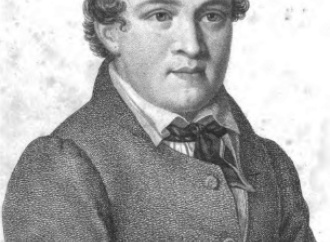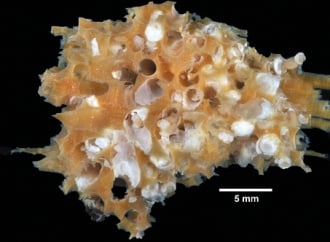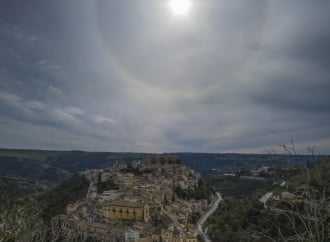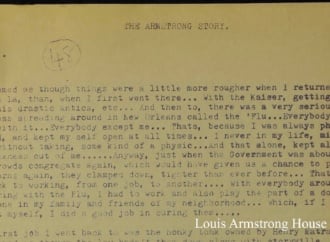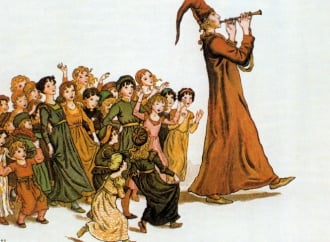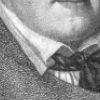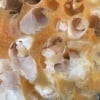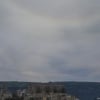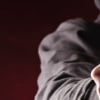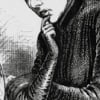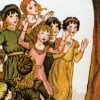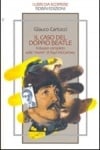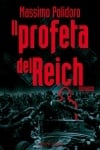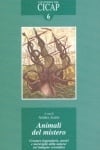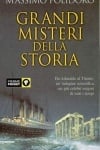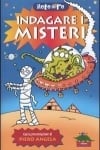As the world shrinks and modern technology advances, the lands to the south continue to intrigue. With their vast, remote regions and rich cultural history, Mexico and Latin and South America naturally evoke mystery.
It is, however, a short step from the lure of genuine enigmas to the plagues of mystery mongering, conspiracy theorizing, and outright hoaxing -- plagues that have often victimized the truth behind the legacies of these tropical civilizations. Here are several examples from the files -- the "ex-files" -- of Skeptical Inquirer magazine.
ANCIENT EFFIGIES. Certain masterworks of the native population have been both deservedly celebrated and greatly misrepresented. These include the massive stone heads that stare vaguely skyward from Easter Island, and Peru's Nazca drawings, figures of birds and other creatures so large they can only be properly viewed from an airplane -- or a spaceship. To Erich von Dà¤niken, author of the 1970s bestseller Chariots of the Gods, these are evidence of visits by "ancient astronauts." Supposedly it was their advanced technology that helped the "primitive" natives produce the effigies -- possibly as landing beacons or as offerings to the extraterrestrial "gods."
In fact, Easter Island's quarries contain unfinished, abandoned statues -- believed to honor ancestral rulers -- that provide mute testimony of their stone-ax creation. In 1955 explorer Thor Heyerdahl commissioned the island's inhabitants to re-erect one of the fallen statues. Through sweat and toil they accomplished the task by using the "heave-ho" approach von Dà¤niken disparaged. Despite such convincing counter-evidence, Von Dà¤niken's conjecture lives on as fantasy fodder for numerous books and cable television documentaries on the unexplained.
Similarly, the Nazca effigies -- which may have had astronomical/religious significance -- are clearly associated with the ancient Nazca Indian culture. A front-cover story in Skeptical Inquirer (Spring 1983) demonstrated how such giant figures -- like the 440-foot-long "condor" -- could be duplicated using only sticks and cord, together with some "native" ingenuity. As to the possibility of extraterrestrials landing on the soft desert, the late Nazca expert Maria Reiche commented: "I'm afraid the spacemen would've gotten stuck."
SKULL OF DOOM. A remarkable rock-crystal death's head, supposedly fashioned without the aid of tools, has been attributed to the mythical sunken continent of Atlantis. Its owner, Anna Mitchell-Hedges, claims she found it on her seventeenth birthday during her adoptive father's excavation of the lost Mayan city of Lubaantun in Belize (then British Honduras). Once said to bode ill to anyone who would mock it, the crystal skull has been rehabilitated by New Agers who ascribe to it the powers of fortune telling and healing.
Actually the artifact, which does show evidence of tool work, resembles rock- crystal skulls made by the Aztecs as a symbol of death. Not only is there no proof Miss Mitchell-Hedges was at Lubaantun but documentary evidence proves her father simply bought the item at a Sotheby's sale. And there is no scientific evidence that the famous skull has properties different from other crystalline quartz. (See Joe Nickell with John F. Fischer, Secrets of the Supernatural, Amherst, N.Y.: Prometheus Books, 1988, pp. 29-46.)
IMAGE OF GUADALUPE. A portrait of the Virgin Mary, said to be "made without hands" and to be scientifically inexplicable, is enshrined in a Mexico City church. Attracting more pilgrims than any other Catholic shrine except the Vatican, the image is widely reproduced in the form of icons, religions medals, neon signs, even tattoos. According to pious legend, it appeared as a "sign" on a peasant's cloak, just after the Spanish conquest. Due in part to confusion of the image with that of their own Virgin goddess, Tonantzin, the Aztecs were soon converted to Catholicism.
In fact, if the image were scientifically inexplicable it would be because independent scientists are not permitted to examine it. However, photographic enlargements show obvious signs of artistry, including some places where paint has obscured the cloth's weave and others where it has cracked. Infrared photos reveal preparatory sketch lines beneath the paint. Also, the image copies traditional Spanish portraits of Mary, and there is a report from an investigation of 1556 that the work was done by an Indian painter named Marcos. (See Skeptical Inquirer, Spring 1985, pp. 243-55.)
EL CHUPACABRAS. In 1995, reports of a bloodthirsty beast known as El Chupacabras ("the goatsucker") spread from Puerto Rico to Mexico and the southern United States. The bulging eyed, reptilian creature-variously assigned an extraterrestrial or supernatural origin-reportedly attacked goats, rabbits, dogs, and cattle, sucking all the blood from them.
Investigation, however, soon showed the animals were not drained of blood, and stakeouts invariably yielded nothing more exotic than wild dogs. The rest was mass hysteria spread largely by sensationalized media reports.(See Skeptical Inquirer, September/October 1996, pp. 12.)
MIRACULOUS SURGERY. Called "the surgeon of the rusty knife," Brazil's Jos Arigo (1921-1971) supposedly performed operations with little pain or blood and no infection. Despite folktales of his prowess, however, it appears that Arigo simply performed primitive surgeries like lancing boils or removing cysts, while prescribing antibiotics and mumbo-jumbo remedies. (His brother ran the only pharmacy in the village.)
Other Brazilian healers have practiced "psychic surgery" whereby "tumors" or other diseased tissue are supposedly removed with bare hands. Common also to the Philippines, such effects are fraudulently produced by sleight of hand using animal tissue and blood. (See Skeptical Inquirer, Fall/Winter 1977, pp. 104-110.)
MEXICAN UFO WAVE. During the 1990s, Mexico City and nearby locales have been abuzz with flying saucers -- or at least unidentified flying objects. For example, in 1991 a total solar eclipse attracted numerous skywatchers whose camcorders captured luminous UFOs hovering overhead. And subsequent years brought additional amateur and commercial footage of various "inexplicable" phenomena.
While some waxed eloquent about Mayan cosmology, skeptics observed that some of the photogenic UFOs were positioned precisely where Venus and other planets and stars had been, and that other video sequences were indistinguishable from hoaxes. (For more on UFOs see Philip J. Klass, UFOs Explained, New York: Vintage, 1976.)
CARLOS CASTANEDA AND DON JUAN. Feeding on the New Age infatuation and drug culture of the 1970s, anthropologist Carlos Castaneda (1925-1998) claimed to be America's firsthand chronicler of don Juan Matus, a Yaquis Indian sorcerer in Mexico whose powers included dream transport and miraculous herbal healing. Castaneda devoted his Ph.D. dissertation at UCLA and ten best-selling books to the art, magic and life of don Juan. In the process, Castaneda's extraordinary stories helped inspire a close following of devotees and the fad of spiritual shamanism.
Allegedly based on field experience, observations, and interviews with the sorcerer among the exotic flora and fauna of the Mexican desert, Castaneda's accounts are undermined by discrepancies in narrative time flow and by peculiar inconsistencies in language. For example, don Juan never speaks Yaqui nor does he use Spanish. Few names of Mexican plants are provided other than Jimson weed, mescal, and hallucinogenic mushrooms. As author Gordon Stein points out, although a "smoking gun" proving don Juan a hoax has not surfaced, strong circumstantial evidence shows Castaneda's books rely on information borrowed from other published sources, and not on field observations of a Yaqui sorcerer. (See Skeptical Inquirer, Spring/Summer 1977 and Spring/Summer 1978.)
As these examples indicate, the exotic lands to the south are intriguing in their own right. Charlatans, mystery mongers, and hoaxers, many times in an effort to package and sell sensationalism to the media, simply divert attention from the genuine wonders and mysteries that are best left to the pursuit of science and reason.
Joe Nickell is Investigative Columnist for SKEPTICAL INQUIRER, The Magazine for Science and Reason.
Matt Nisbet is Public Relations Director for the Committee for the Scientific Investigation of Claims of the Paranormal (CSICOP.)

